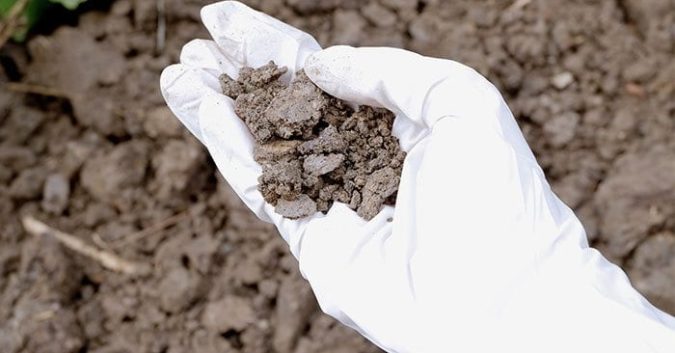After 30 years of silence, residents of Geneva, New York have just been informed by authorities that their yards are teeming with toxic — and deadly — metals.
Soil surrounding an old foundry in Geneva, a historic town near Finger Lakes, has been found to contain lead and arsenic, putting inhabitants of the area at risk of poisoning. Though the contamination is widespread in the area and could have already had serious effects on people’s health, the secret is only now coming out.
A 30-Year Cover-Up
Back in 1986, a local resident complained about waste finding its way into her backyard from the former Geneva Foundry, which made cast iron components before it closed in 1988.
As it turns out, the foundry’s operations were less than permissible. Not only was no pollution control in place, but some of the iron used in production contained lead and other toxic metals – from which airborne particles built up on surrounding soil.
Upon investigation, a state environmental health expert described the lead concentration here as “highly elevated” and called for further studies and for nearby residents to be alerted. This was upheld when, 10 years later, more independent consultants urged the removal of this soil. The state’s own internal studies concluded that the threat to residents’ health was enough to require government action.
But it wasn’t until October this year, more than 40 years after these recommendations were made, that residents of the area were warned of unsafe concentrations of lead and arsenic on their properties. The U.S. Environmental Protection Agency (EPA) is charged with the responsibility to disclose such threats right away.
“That’s pretty outrageous,” Joseph Gardella, a professor of chemistry at the University at Buffalo, told the Democrat & Chronicle in a recent report. “I’ve worked with EPA a lot, and the standard is, the first people who get the report are the people who own the property. If that's consistently what happened, that's a violation of every practice I've seen.”
Why Weren’t Residents Told?
Despite the urgency of the lead contamination problem, residents of Geneva were kept in the dark for decades – and still aren’t even being told the whole truth. There was no mention in the letters mailed to property owners in October of why this information took so long to surface.
When soil around the foundry was found to be contaminated, the New York State Department of Environmental Conservation (DEC) made a seemingly nonsensical decision to place only the foundry itself into a state remediation program to replace the soil – not the surrounding neighborhood. In a statement, the department explained that this was because “further investigation was needed.”
Now, the DEC claims that there was, in fact, no urgency to take action in the 1980s, because lead cleanup standards were more relaxed. But this is “just not true,” according to Gardella. “The standards that set decision-making for cleanup of lead and arsenic haven’t changed much for 30 years.”
It’s believed that the DEC’s idleness was due in part not to relaxed standards, but to financial restrictions. In order to qualify for state funding – which would have been limited regardless – the DEC would have had to prove that the lead and arsenic came from industrial source. Clearly, officials were in no hurry to do so.
The Department of Health (DOH) was also unwilling to intervene, saying the lead and arsenic levels weren’t high enough to warrant remediation funding. But findings from 30 years ago told a different story.
The Deadly Effects
A cleanup plan has finally been proposed, and the state plans to spend $17 Million to remove contaminated soil. However, residents face years of disturbance to their homes due to this remediation, and are appalled to have not been warned sooner. Especially considering the potential dangers of prolonged arsenic and lead exposure.
Arsenic, similarly to asbestos, can be microscopic but cancerous if ingested in large quantities. And lead, experts say, poses an even higher risk in Geneva’s soil. “Young children (those prone to placing fingers, other objects or dirt in their mouths) are of particular concern,” said Dr. John Hawley, the environmental health expert who first flagged the soil contamination in Geneva as problematic.
State health officials originally insisted that the amount of this particular amount of lead “could result in an increased possibility for lead exposure, but any such exposure is likely to be small.” But experts believe that, even in small doses, lead exposure to children could result in delayed physical growth, learning disabilities, and many other development issues.
According to federal authorities, high blood-lead levels – whether from soil, paint, or even water – are suffered by half a million American children. Whether children in Geneva have been affected remains unclear for now. But, given the severity of the effects of lead poisoning, the state’s plans to remove contaminated soil can’t be implemented fast enough.
